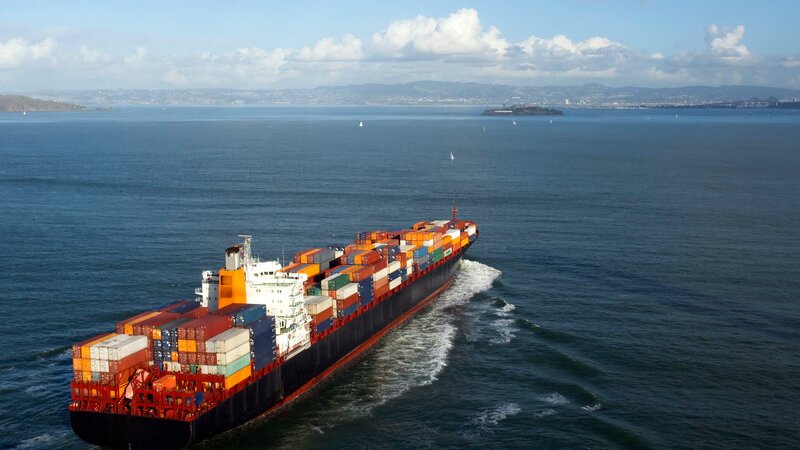Our new NorthStandard site is now live. There will be no new content or updates added to this site. For the latest information, please visit our new site north-standard.com.
Article: Carriage of containers on vessels not specifically designed for the purpose
News & Insights 3 September 2021
The shipping industry is currently witnessing an exceptional boom in the container trade, and due to the increasing demand, some freight forwarders and other parties are exploring unconventional methods to accomplish their targets...

The shipping industry is currently witnessing an exceptional boom in the container trade, and due to the increasing demand, some freight forwarders and other parties are exploring unconventional methods to accomplish their targets and commitments.
Consequently, there are instances where shipowners are being asked to carry containers either on deck and/or inside holds on ships that are not designed for this purpose. Such a carriage could lead to a number of safety related issues such as stack collapses or container losses overboard. As highlighted in the club’s article (linked below), container stack collapses and associated concerns are not unusual, even on vessels specifically designed to carry containers.
The risks are more significant on ships that are not designed or equipped to carry containers. The crew on such vessels could be unfamiliar with the carriage of containers and may not have the capabilities or understanding to ensure safe carriage. Therefore, prior to any agreement being reached to carry containers on such ships, it is imperative to:
- carry out a detailed suitability assessment to ensure that the containerised cargo can be safely loaded, carried and discharged from the vessel.
- assess what modifications to the ship may be necessary, for example retrofitting of the deck fittings.
- obtain consent from the ship’s Flag State and Classification Society (Class).
- inform the club.
The carriage of containerised cargo on vessels that are not specifically designed for that purpose may constitute a material change of risk within the meaning of club’s rules, and / or the carriage, trade or voyage may be imprudent or unsafe. As such, it is essential to notify the club in advance to prevent the risk of cover being prejudiced. Further, the club can advise on any potential cover issues regarding deck cargo and requirements to clause relevant bills of lading, for example, to exclude the carrier’s liability for the deck cargo. Further information regarding deck cargo, liabilities and cover can be found below.
Members should also be cautious regarding current charterparty obligations, as well as carefully reviewing the terms of any proposed charterparties. With regard to the former, the carriage of containers on bulkers may be excluded or deemed unsafe, in which case an owner may be entitled to call for fresh orders. As to new contracts, members should be aware that the usual dry bulk charters, such as the NYPE forms, are unlikely to be suitable for the carriage of containerised cargo on vessels that are not specifically designed for that purpose.
For the safe carriage of containerised cargo, members are recommended to consider the following points and have appropriate measures in place:
1. Structural strength of the load area -
- should be verified (during the planning stage) to be sufficient to withstand the load of the containerised cargo or whether any reinforcements are required.
- it is important that the weight is evenly spread on deck so as not to exceed the maximum permissible loading weight per square meter.
- If/when dunnage is utilised, the arrangement and type of dunnage should be suitable to prevent any movement of containers; and the permissible load shall not exceed the deck load density for the specific ship.
2. Stowage and securing of cargo -
- planning should be done with due consideration to the stack height, weight, and dynamic lashing calculations.
- particular attention would need to be given to the stowage location of dangerous goods (DG) and reefer containers. The location of DG containers will need to be in accordance with the International Maritime Dangerous Goods (IMDG) Code, while for reefers, there will need to be a provision of ensuring power supply.
- all the provisions of the IMO’s Cargo Stowage and Securing (CSS) Code as well as Class approved ship’s Cargo Securing Manual (CSM) should be followed. Ship-specific accelerations and calculation examples to securing are to be provided in the CSM.
- only type approved securing equipment is to be used.
- container lashings should be monitored and cross-checked by the ship’s staff after completion of the loading and during the voyage.
3. Ship’s stability and stress calculations -
- metacentric height (GM) should be within optimum range for vessel type. If the value of GM is very large, the vessel will be deemed stiff and there will be excessive forces acting on the cargo lashing. If the value of GM is small, the ship will have long rolling period with prolonged strain on cargo lashings.
- intact GM limit curves shall be recalculated taking into account an additional wind profile area from deck cargo.
- depending on ship’s freeboard, it may be necessary to re-address the damage stability calculations.
- compliance with other statutory requirements like loadline regulations, IMO visibility criteria, etc.
4. Updating and reissuance of the certificates and documents -
- ship’s Class may require reclassification of the vessel and possibly other surveys to confirm that the ship is suitable for the carriage of containers.
- procedures relating to the International Safety Management (ISM) code will need to be updated to ensure safe carriage of containers. Upon satisfactory review and verification by the Flag State (or Class, on behalf of the Flag State) company’s Document of Compliance (DOC) and ship’s Safety Management Certificate (SMC) will be reissued.
- other documents and certificates like ship’s stability booklet, loading computer, cargo securing manual (CSM), Document of Compliance for Carriage of Dangerous Goods Certificate, will need to be amended and submitted to Class for re-approval.
5. Appoint a marine warranty surveyor -
- to inspect the ship prior to loading, to ensure its suitability for the containerised cargo.
- to review the stowage and securing arrangements, stability data, lashing equipment, ship certificates and documents, and ensure that the risks associated with the specified operations are reduced to an acceptable level in accordance with best industry practice.
类别: Loss Prevention

